The planet has gone through different stages, which have created environments for almost alien species to emerge. Animals much different than what’s on earth today swam in the oceans because of different temperatures and oxygenation levels. What eight extinct sea creatures give us a glimpse of these ancient oddities?
Marine life experienced some of the highest rates of extinction in the past compared to terrestrial species. Today, the oceans are experiencing an extinction rate much lower than what we are experiencing on land. However, this could change as more industrialization focuses on ocean resources.
The more we understand the past, the more we understand how to conserve what we have on the planet today. Our human interest in an ancient world that we can’t access fuels our curiosity. Let’s go over 8 extinct sea creatures that demonstrate how different things were in the past.
8 Extinct Sea Creatures
These are 8 of the extinct sea creatures that once lived on our planet:
- Trilobites
- Plesiosaurs
- Cameroceras
- Ammonites
- Megalodons
- Jaekelopterus Rhenaniae
- Tylosaurus Proriger
- Anomalocaris Canadensis
1. Trilobites
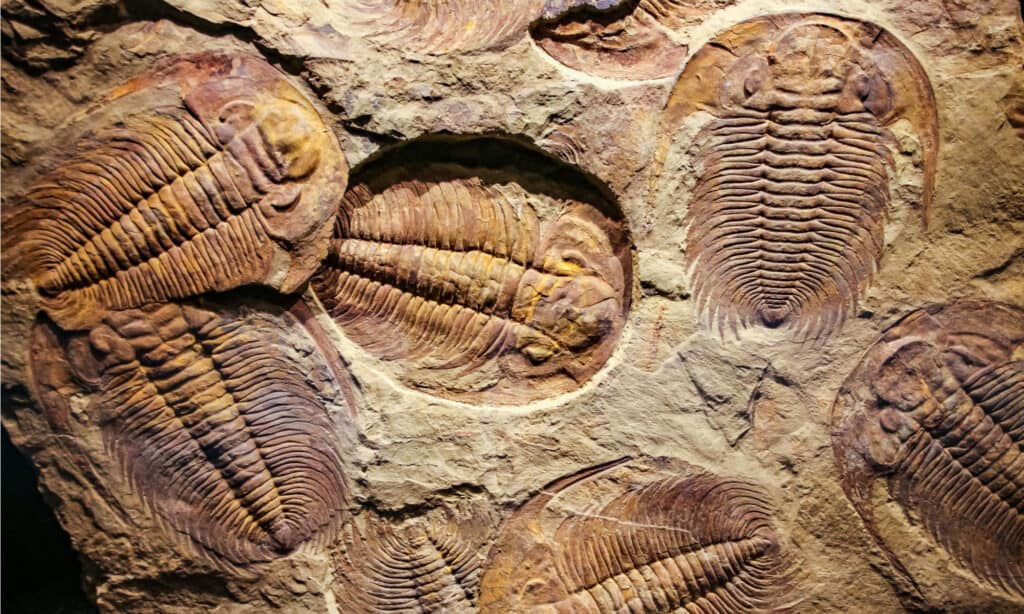
Trilobites existed in the oceans for 270 million years before going extinct.
©Merlin74/Shutterstock.com
Trilobites were arthropods that managed to survive in the oceans for about 270 million years, and it was one of the most successful marine species of all time. Their exoskeletons are easily translated into fossils, so there is tons of information about trilobites.
There were a huge variety of trilobites in existence. Some were bottom dwellers that scavenged for food, while others swam through the open ocean, eating plankton.
Some were small, but the largest grew to a foot and a half long and weighed 10 lbs.
They went through a long decline after their peak about 521 million years ago. Their dwindled population was completely eradicated during the Permian Extinction around 252 million years ago. The Permian Extinction Event was the third mass extinction and was the largest.
2. Plesiosaurs
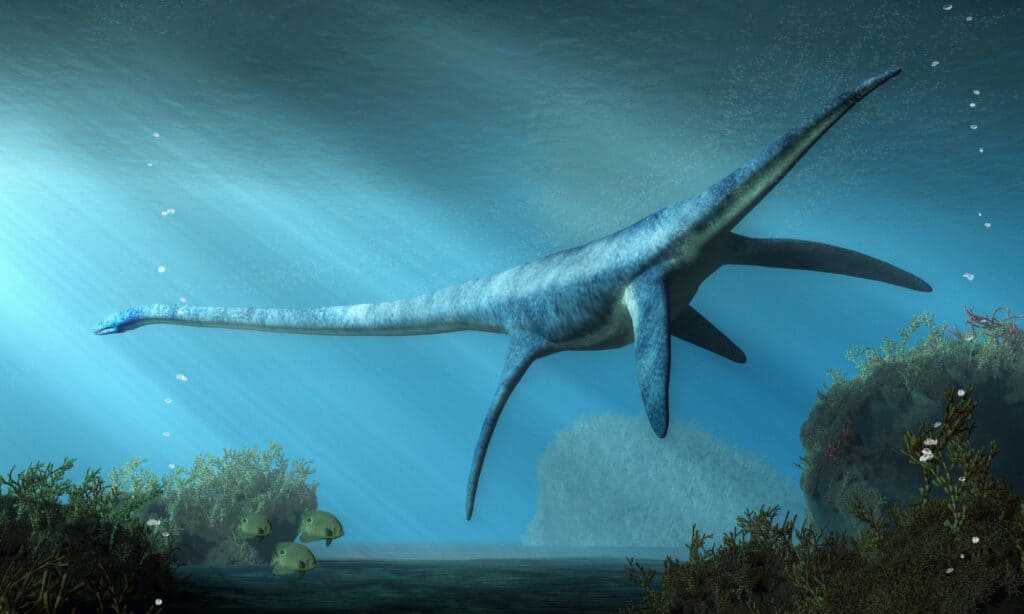
Plesiosaurs were probably warm-blooded air breathers. They went extinct 66 million years ago.
©Daniel Eskridge/Shutterstock.com
This huge marine reptile went extinct during the 5th extinction event on the planet at the end of the Cretaceous period. It experienced its heyday about 203 million years ago and disappeared from the earth about 66 million years ago.
They were probably warm-blooded air breathers with flippers on each of their 4 limbs. A hundred species of plesiosaurs have been identified; some had long necks and ate smaller creatures, while others had short necks and were apex predators.
Plesiosaurs have received much attention because they were the first extinct and fossilized reptiles to be found.
3. Cameroceras
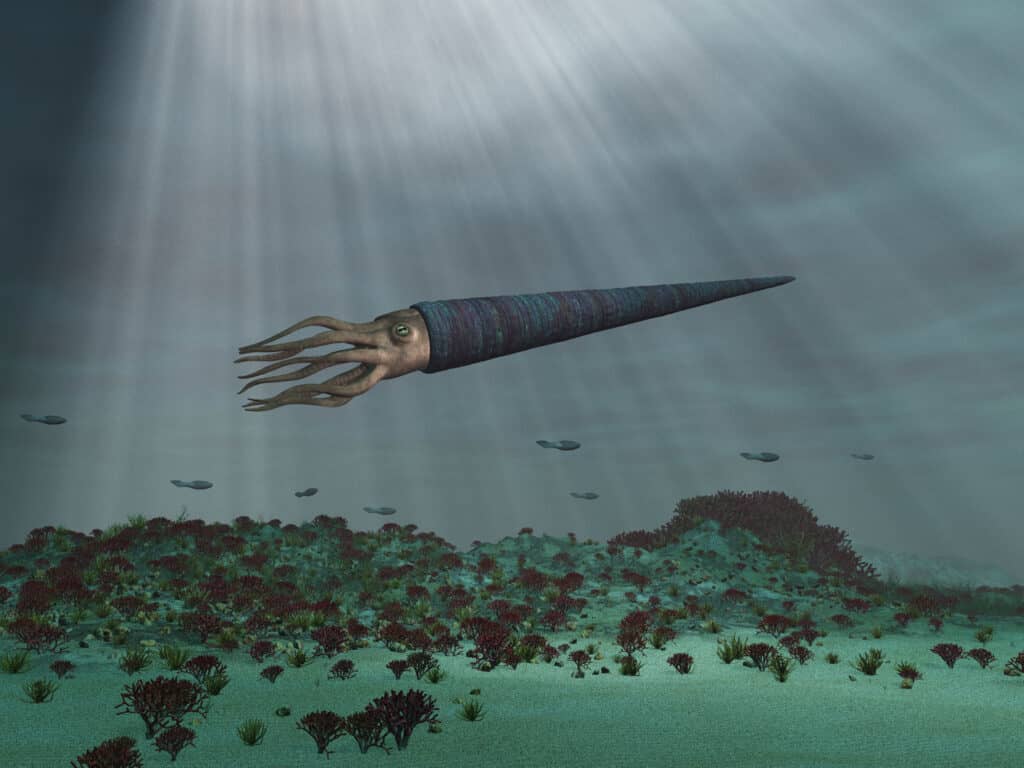
The Cameroceras had large tentacles that they used to trap and consume prey.
©iStock.com/estt
This animal was a giant cephalopod with a keratinous beak like these modern sea dwellers. Modern cephalopods include octopuses and squid.
The Cameroceras had large tentacles that they used to trap and consume prey. These tentacles protruded from their faces, with their bodies wrapped in a shell. They probably hung out on the bottom of the ocean, stalking their next meal.
The Ordovician Extinction Event was the first mass extinction event on the planet, approximately 443 million years ago. Cameroceras first appeared about 470 million years ago. While the Ordovician Extinction Event didn’t wipe out the Cameroceras, they were gone soon after due to a loss of diversity.
4. Ammonites
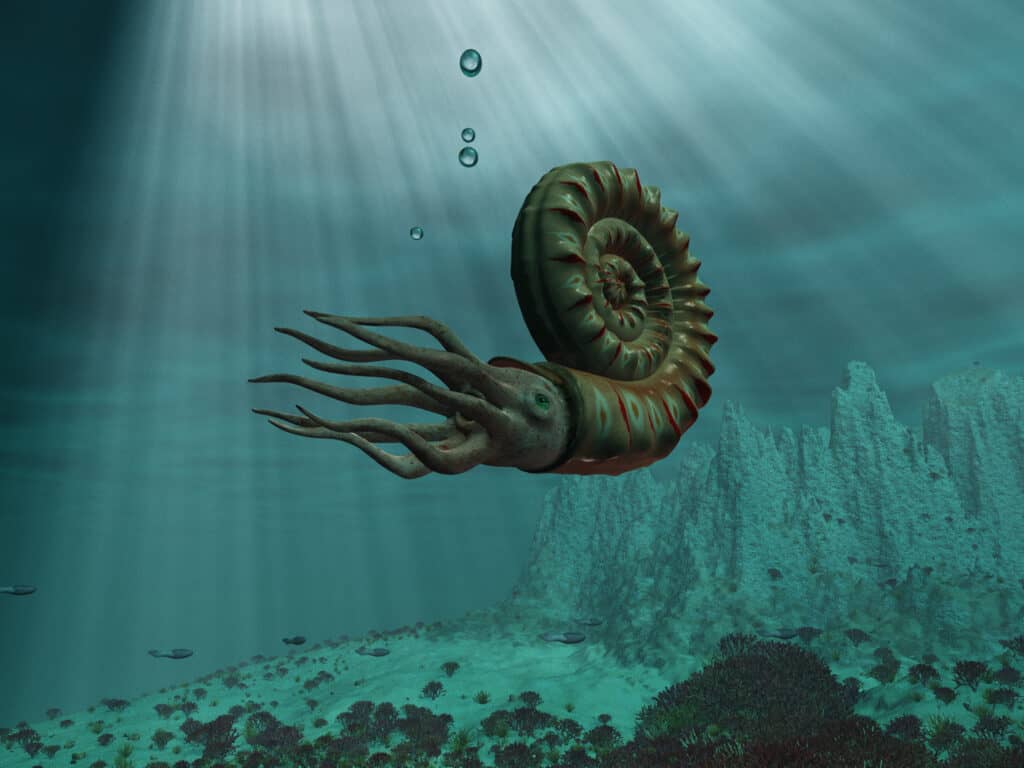
While ammonites were born with a small shell, they elongated it by building new sections.
©iStock.com/estt
Ammonite is a mollusk that went extinct 66 million years ago during the Cretaceous extinction event.
These are commonly found as fossils, but their shells are the only ones found intact. No fossilized soft tissues have been discovered, making it hard to determine this animal’s lifestyle accurately.
It was most likely an excellent swimmer that lived in the open ocean. They used their shells as a flotation devices that controlled their buoyancy.
While they were born with a small shell, they elongated it by building new sections. As the old sections became too small to accommodate the ammonite’s body, it sealed off those sections. This created a spiral shape though a few ammonites were not spiraled.
5. Megalodons
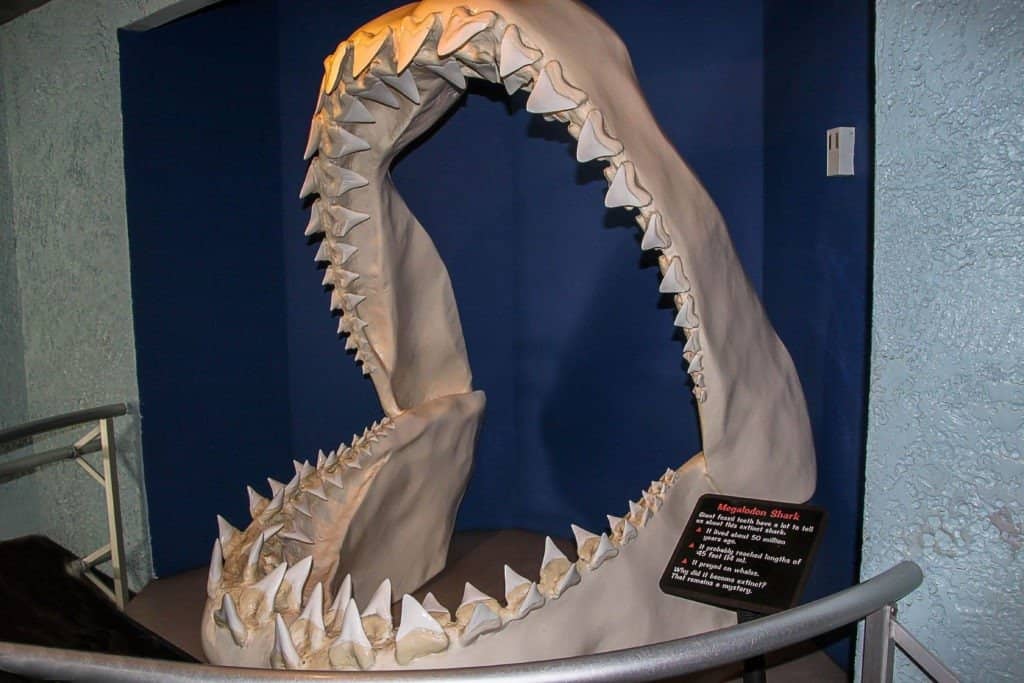
Megalodons were the largest sharks and went extinct 2.6 million years ago.
©Mulevich/Shutterstock.com
Megalodons are the largest sharks that ever lived.
This huge shark had 7-inch teeth. Fossils have been found all over the globe, and they’ve been extinct for approximately 2.6 million years.
A full skeleton has not been recovered, but we know it was a top predator that liked deep water, and it may have explored parts of the ocean that we humans haven’t explored.
Great white sharks are their closest living relative though the megalodon was 3 times their size.
6. Jaekelopterus Rhenaniae
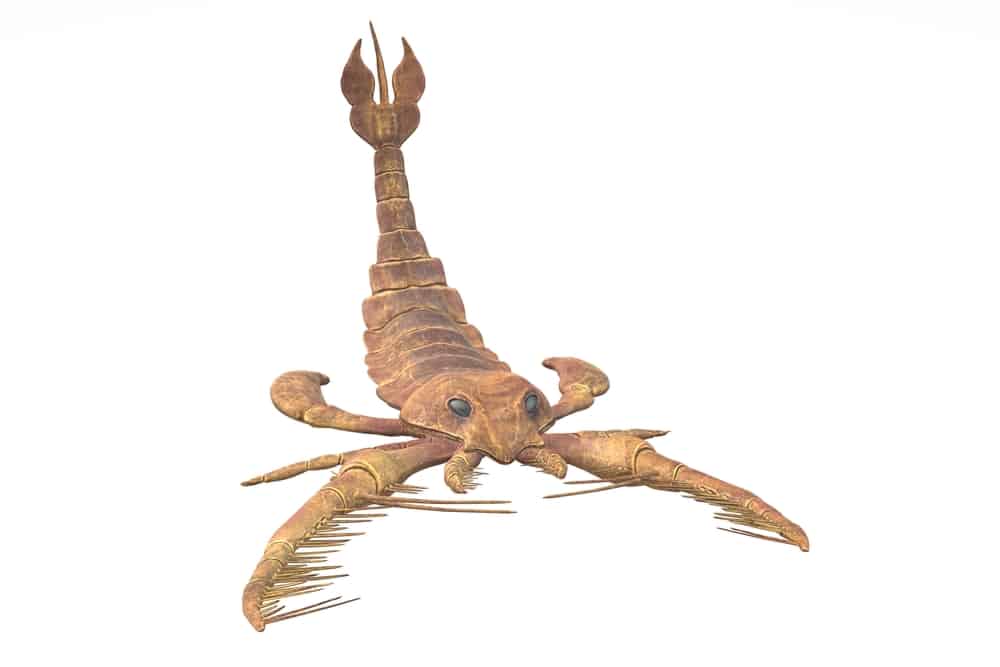
Jaekelopterus Rhenaniae is an extinct sea scorpion that may have thrived in fresh water.
©Dew_gdragon/Shutterstock.com
These extinct arthropods were huge aquatic scorpions. It reached a length of about 8.5 feet which makes it the largest arthropod ever. It had two large pincers on the front of its body and was probably an apex predator with great eyesight.
These sea scorpions may also have been capable of living in freshwater environments as their fossilized remains have been found in areas believed to have been devoid of salt water.
7. Tylosaurus Proriger

Tylosaurus was a carnivorous marine reptile that lived in the North America Western Interior Seaway during the Cretaceous Period.
©iStock.com/CoreyFord
Tylosaurus Proriger was a marine lizard that averaged 45 feet in length, which is as long as a school bus. While their remains are found in arid environments, they only lived in ancient and long-gone seas that existed about 65 million years ago.
It had two rows of sharp cone-shaped teeth. It captured prey with strong jaws and then swallowed it whole. It was an apex predator.
8. Anomalocaris Canadensis
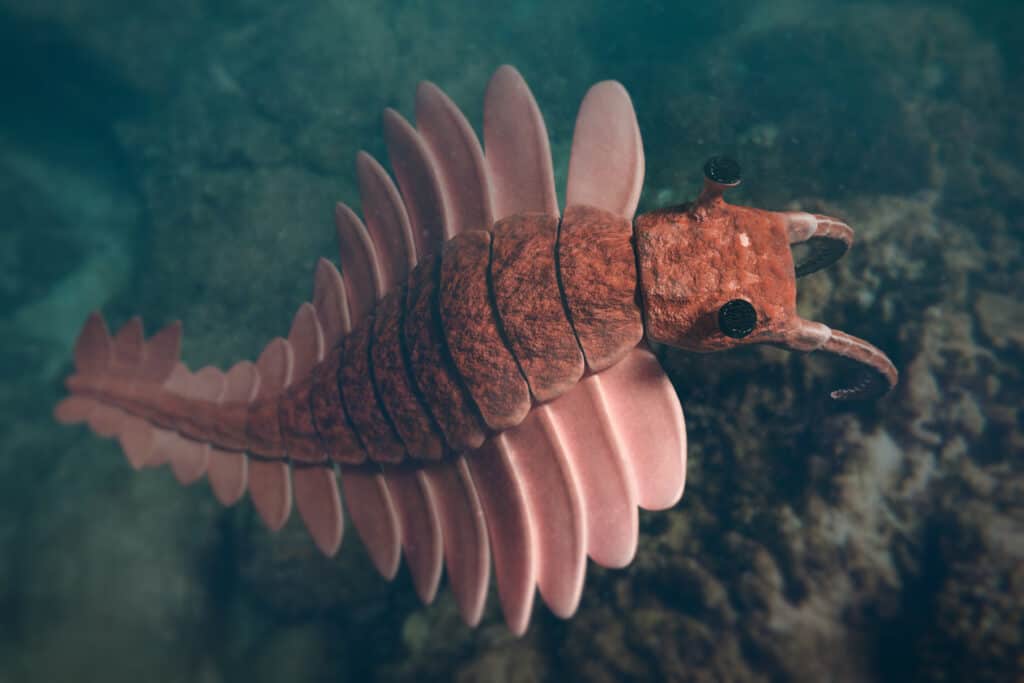
The Anomalocaris went extinct about 500 million years ago.
©Dotted Yeti/Shutterstock.com
These animals were similar to arthropods but were distinctly different groups of animals. All of them in the entire genus are extinct, and they may have been one of the first apex predators in the ocean.
It looked like a shrimp, and it grew over a foot long. Its undulated flaps extend from its body’s sides, allowing it to swim through water.
It probably used its ridged and intimidating frontal appendages to capture prey. It may have consumed animals like trilobites.
They went extinct about 500 million years ago.
Cause of Extinction

Woolly mammoths were driven to extinction by climate change and human impacts.
©Mauricio Antón, CC BY 2.5, via Wikimedia Commons – License
The exact cause of the extinction of these ancient animals is not known for certain, but there are a few theories that could explain why they went extinct. A combination of factors likely led to their demise, including environmental changes due to climate change, disease, and competition from other species.
Climate change has been suggested as one possible contributing factor in the extinction of many species throughout history. The Earth’s climate has gone through natural cooling and warming cycles, which can dramatically alter habitats and create conditions too extreme for some organisms to survive in. As temperatures rise or drop significantly over a short period of time, it can be difficult for species to adapt quickly enough in order to continue living in their environment.
Disease may also have played a role in the extinction of these ancient creatures. However, it’s hard to know exactly how much impact it had without further research into this area. Diseases caused by bacteria or viruses can spread rapidly through populations with devastating effects if there isn’t any immunity present within the population itself or among related species with whom they share an environment.
Finally, competition from other animals may have contributed to their eventual disappearance as well. When new predators arrive on the scene, they often compete directly against existing species for resources such as food and shelter until one (or both) become extinct due to the increased pressure placed upon them by this new competitor(s).
Is it Normal for Animals to Go Extinct?
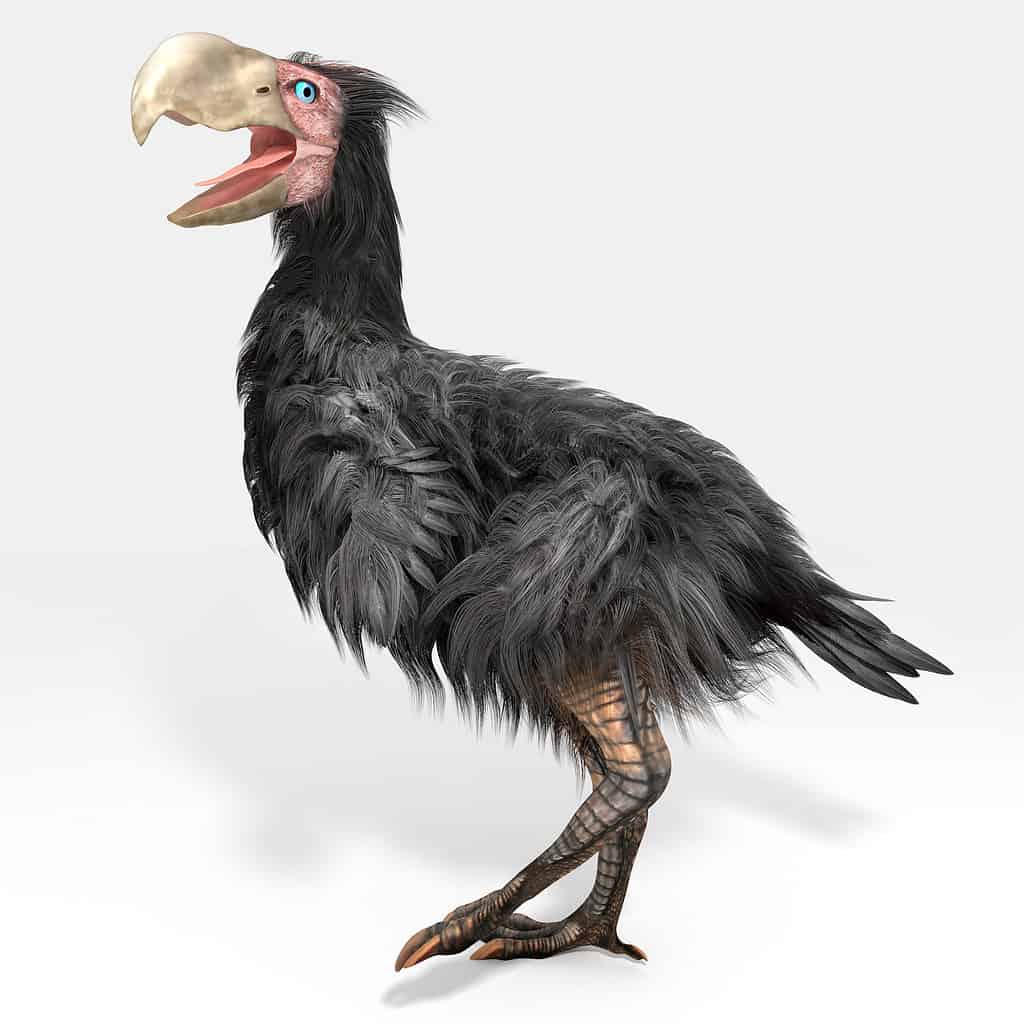
Gastornis, an extinct genus of large flightless birds.
©iStock.com/Aunt_Spray
Is it normal for animals to go extinct? This is a question that has been asked for centuries, and there are still no clear answers. Throughout history, many species of animals have gone extinct due to various reasons such as climate change, human activities, natural disasters, or disease. While some scientists view extinction as part of the evolutionary process, other experts believe that humans have an obligation to prevent mass extinctions from occurring in the future.
Regardless of whether or not we consider extinction normal, it is important to remember that every animal plays an essential role in maintaining balance in our ecosystems. When one species goes extinct, the entire system can be thrown off balance and cause immense harm to nature and its inhabitants. Therefore, understanding why certain species become endangered and taking steps toward their conservation should be a priority if we want to ensure healthy biodiversity on Earth.
Up Next:
- 5 Extinct Types of Whales
- Why Did Megalodon Sharks Go Extinct?
- This Gigantic “Crushed Squid” Grew up to 33FT and Could Have Easily Eaten Humans
The photo featured at the top of this post is © iStock.com/estt
Thank you for reading! Have some feedback for us? Contact the AZ Animals editorial team.






